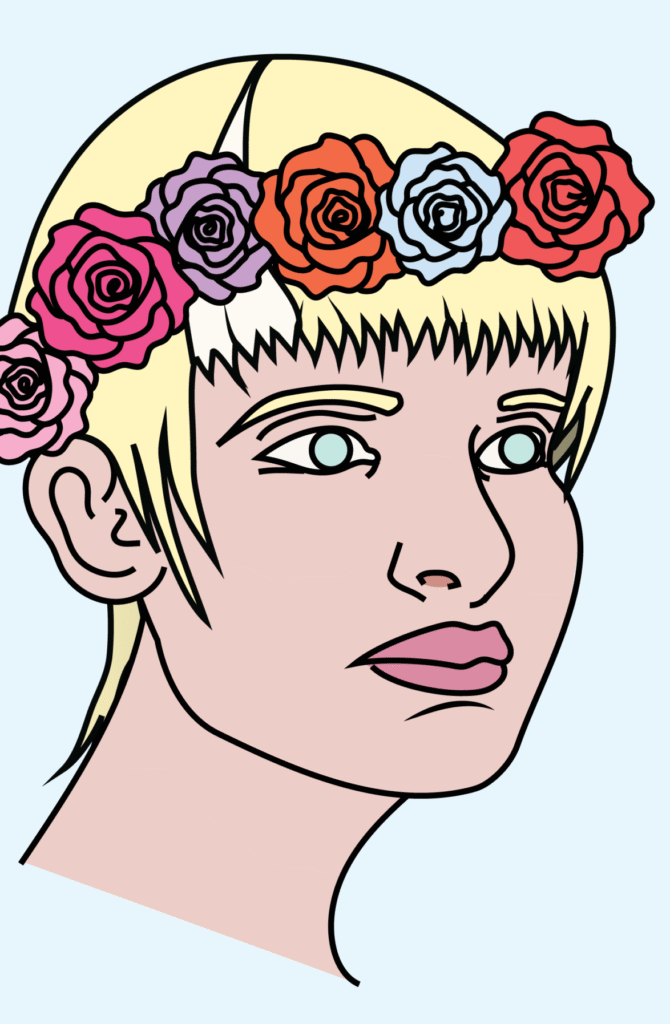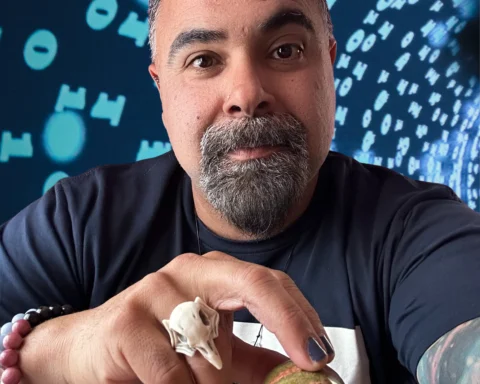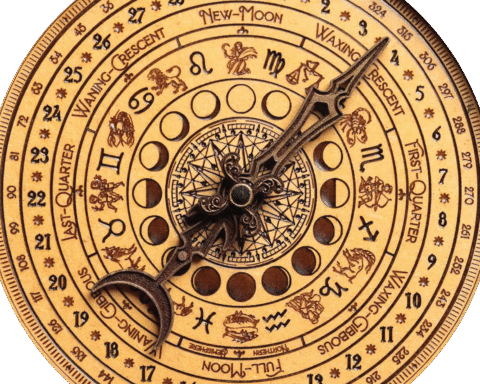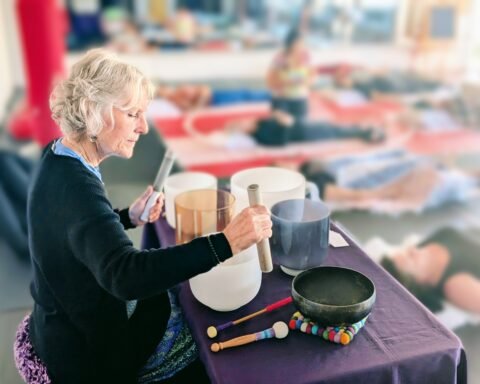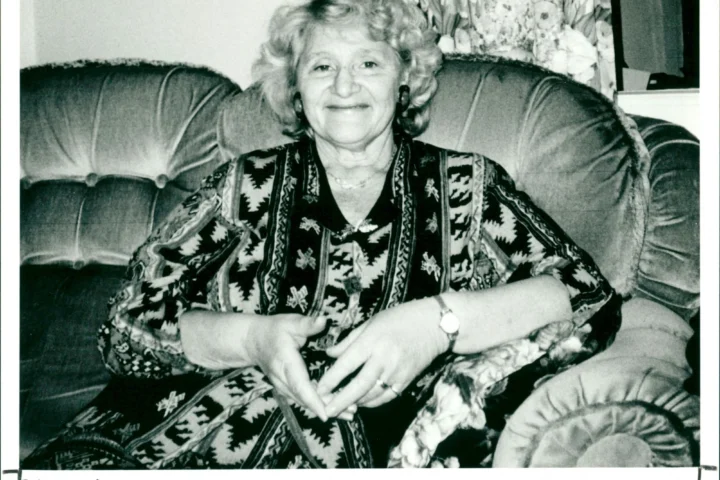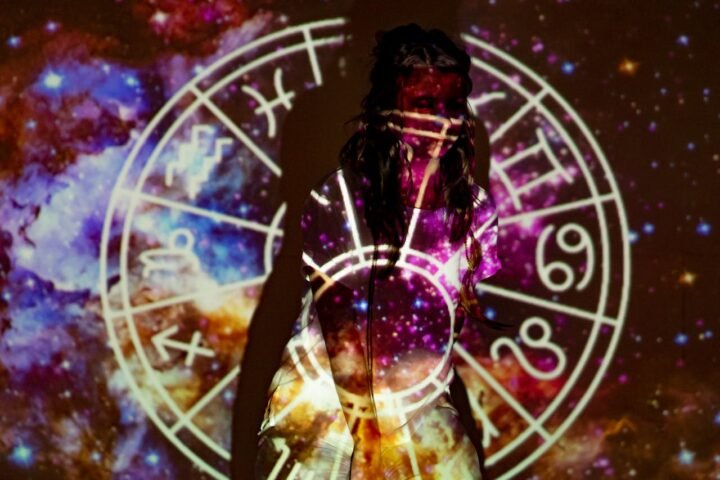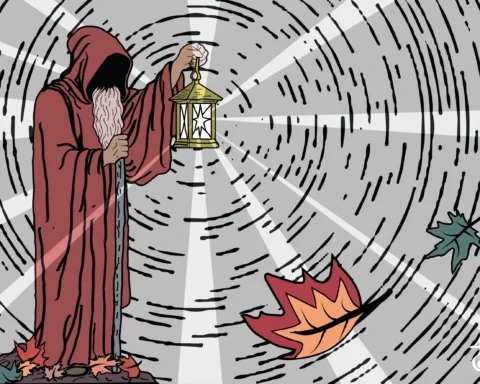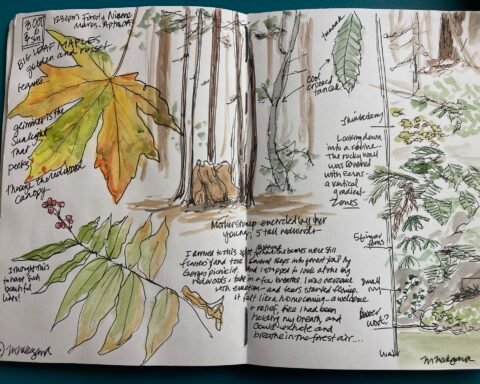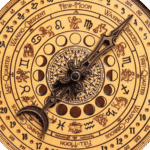“I’ve been celebrating May Day with my mom since I was born,” remembered Julia, a local ecstatic dancer who describes herself as a “Joyful Embodiment Specialist.” Some of her earliest memories are not of birthdays or classrooms but of ribbons—bright, satin strands pulled tight around a wooden pole until the whole thing disappeared beneath a lattice of color. “The first one I remember was in the Santa Cruz Mountains,” she said. “It was early, eight in the morning, foggy and misty, with donut-eating contests and everyone in pretty dresses and all the colors of the strings or the ribbons of the maypole. It was really beautiful.”
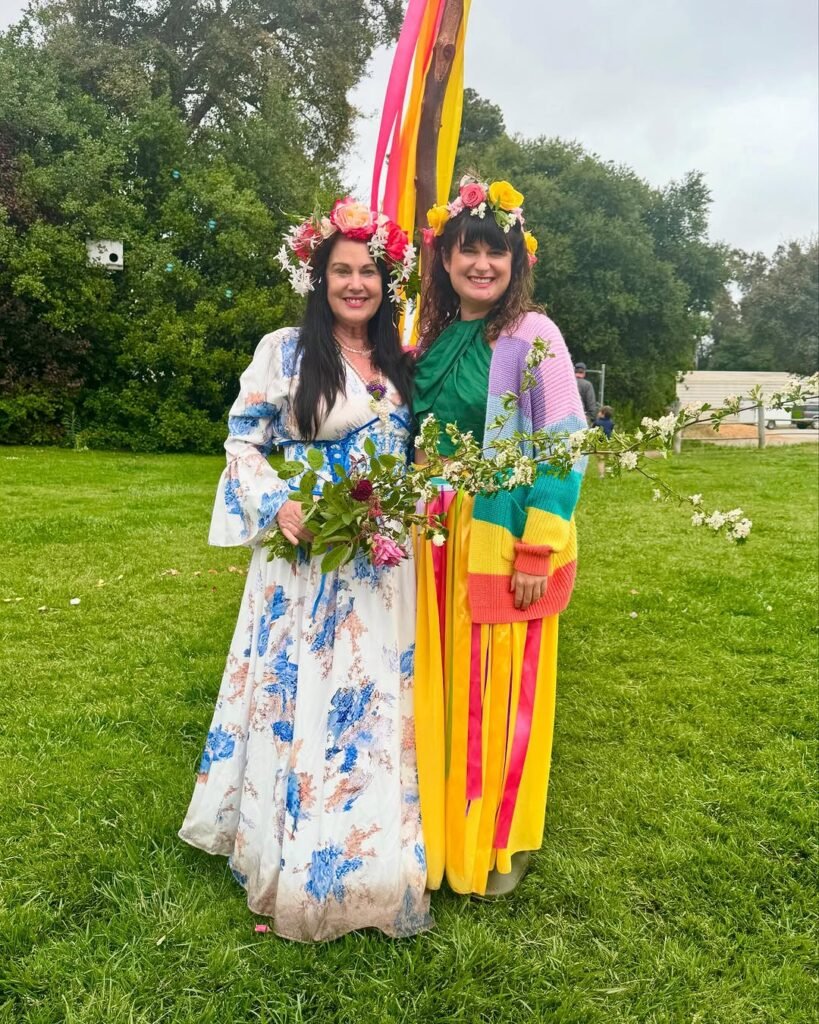
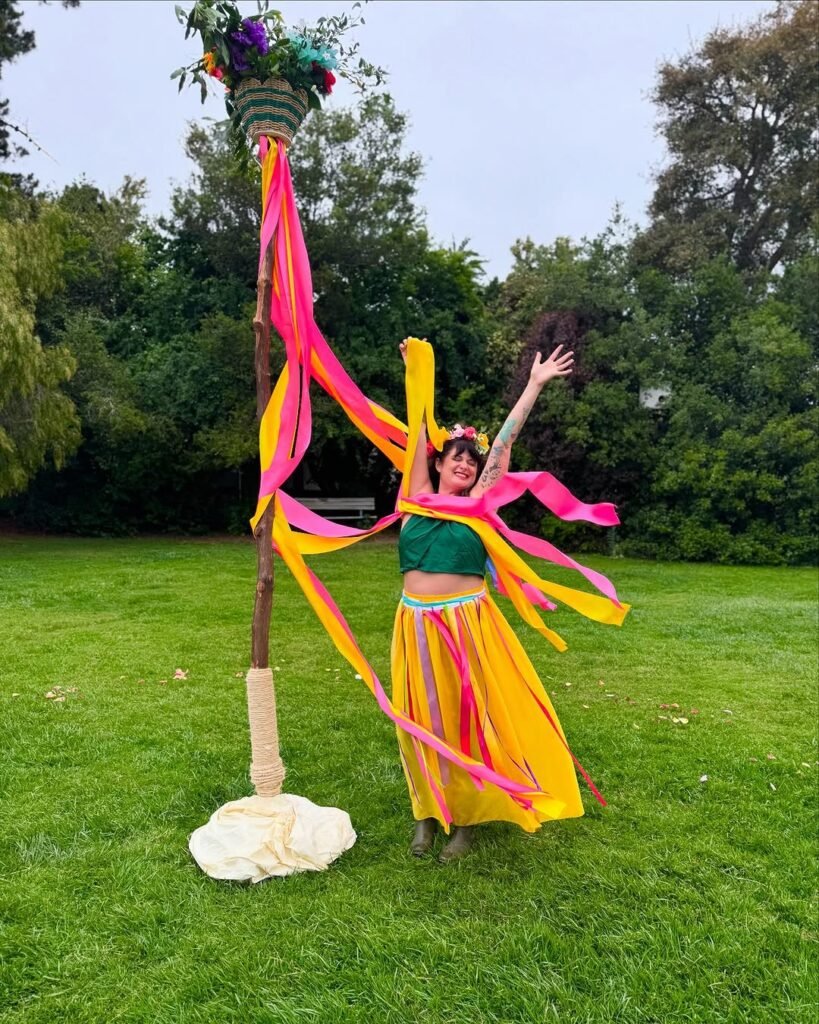
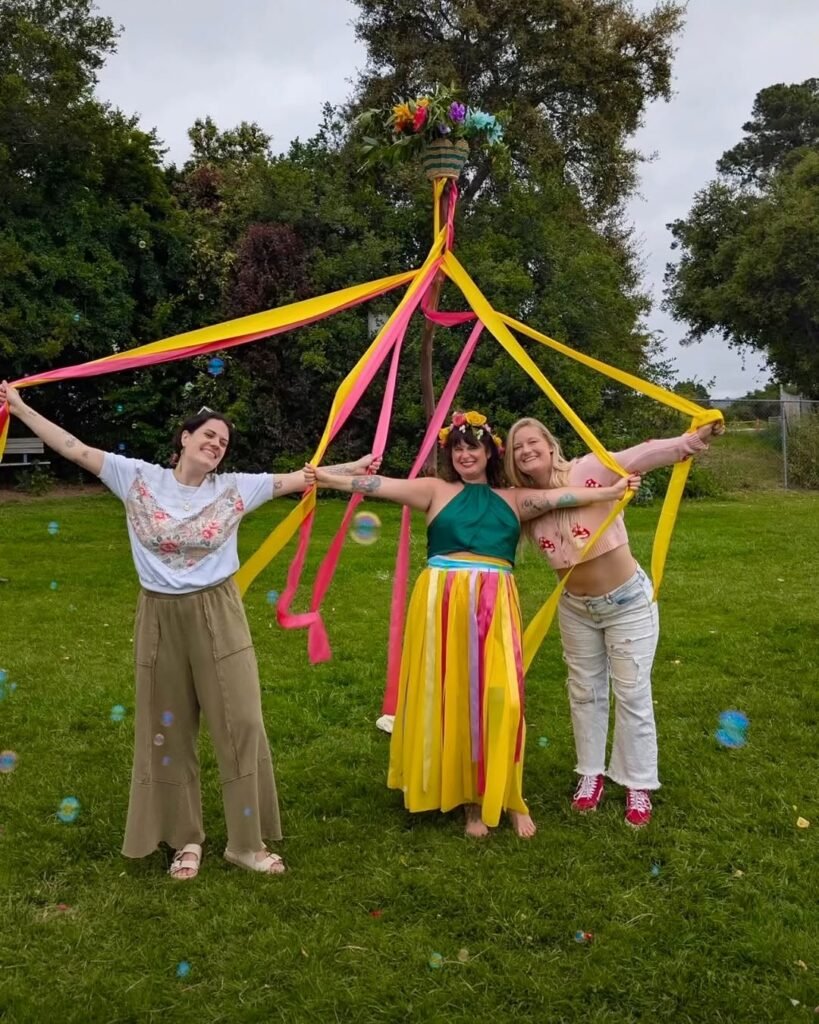
May Day itself is far older than Julia’s memory, and her mother’s impressive 30-year history of hosting events. It is one of Europe’s oldest seasonal festivals, marking the beginning of summer and falling halfway between the spring equinox and the midsummer solstice. In Britain and northern Europe, the maypole became its most enduring emblem of celebration, abundance, and the changing of the seasons. In other regions, bonfires were central. In Gaelic culture, Beltane fires were lit to bless cattle as they were driven into summer pastures. In Germany, Walpurgis Night carried its own rites of fire and protection. In Rome, the Floralia honored Flora, goddess of flowers, with theatrical performances and showers of beans and lupins. The common thread was fertility, community, and the renewal of life.
For Julia, the maypole has always meant joy. “It’s love and celebration and fun,” she said. “It’s something I’ve looked forward to every year.” She hosted her first May Day earlier this year, and was admittedly, quite emotional. “It felt like time passing. My mom is retired now, she’s getting older, I’m getting older, and now I’m the one carrying it forward.”
Last year her mother crowned her May Queen, a role Julia thought might never be hers. She commemorated the moment by drying her flower crown and holding onto it as a keepsake. This year she reversed the act, crowning her mother for the first time. “She was shocked,” Julia said, smiling. “But after thirty years of hosting, it was about time.”
The tradition is not static. Julia kept the structure her mother passed down but altered the opening words, the timing, the energy of the day. “You can’t crown yourself,” she said. “But when you finally get to host, you can change a few things.”
Why May Day continues to resonate is not hard to guess. In an age of social media and self-imposed isolation, people still want rituals that are tactile and communal—ribbons, crowns, fire, song. “It’s lightheartedness,” Julia said. “Sweet treats and smiles. Being in community.” The appeal is not in precise choreography but in gathering for something cyclical that highlights not only the forward movement of time but traditions that honor return.
Fore more information on future events, follow Julia on Instagram @Joylliiaa


